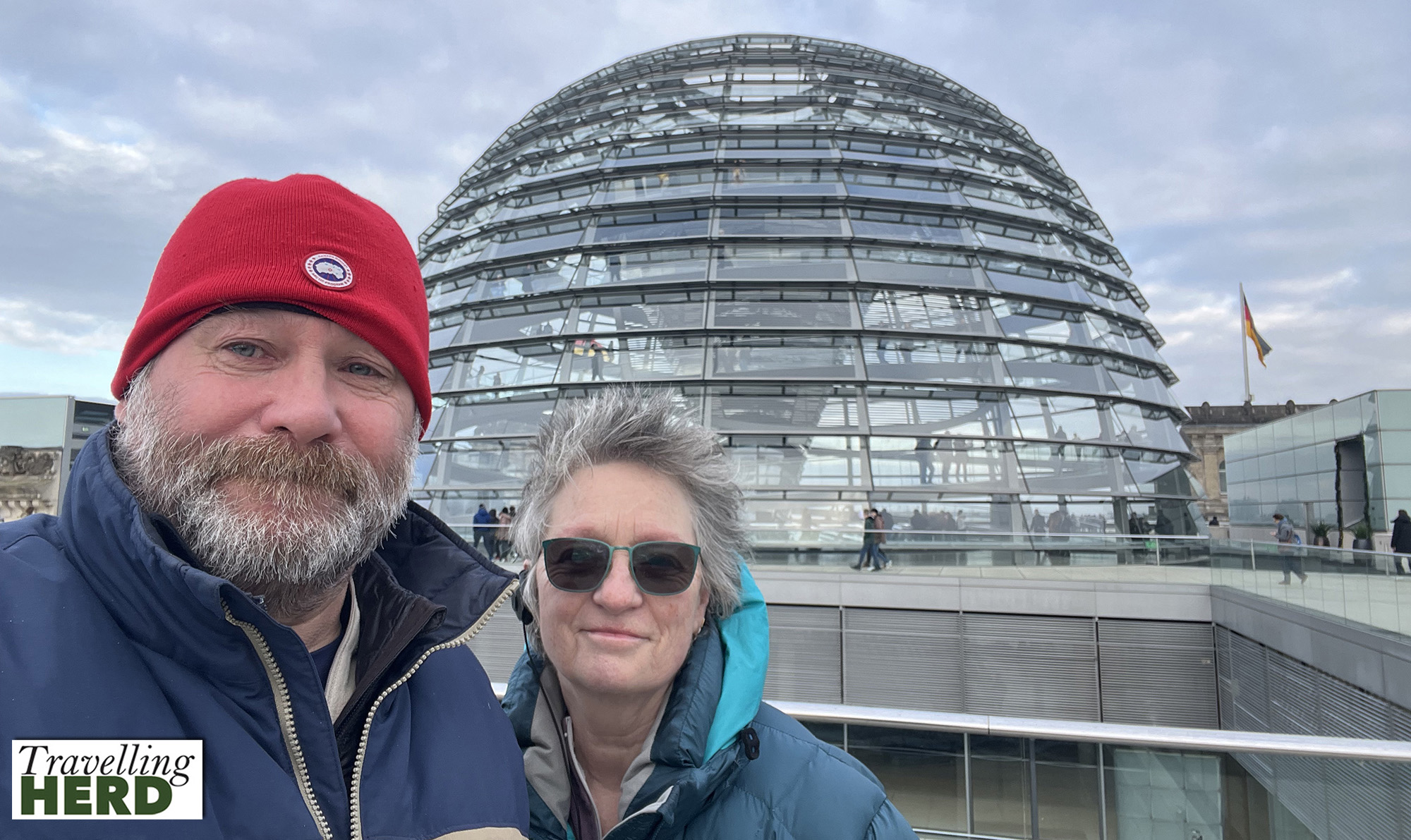Read this blog: The one where we hit the Berlin Christmas markets
Monday 2nd and Tuesday 3rd December 2024
Although the festive spirit sometimes eludes Robert, when Matilda suggested a city break in Berlin to take in some culture and visit the Christmas markets, Robert enthusiastically embraced what he saw primarily as an opportunity to drink beer al fresco in the afternoon.
To maximise our time in Berlin, rather than travel by train, we flew from Heathrow. Over the past few years it has been Robert who has experienced the odd inconvenience when travelling by plane: we think he may share his name with a known criminal. Whatever the reason, his old passport did not usually work in the automated gates and he was invariably referred to Border Control. Surprisingly his passport did work in Iceland. But it was at Reykjavik Airport that he was held back and interviewed by American officials as he had sulphur residue on his clothing from the caves we had visited.
This trip it was Matilda who became quite embarrassed and flustered when one of the flight attendants made a request over the tannoy for her (and one other passenger) to make themselves known to the cabin crew. Robert, needless to say, instantly pointed her out and she had to re-present her passport for closer scrutiny. Everything was in order. After some discussion, Robert eventually admitted that the issue could have arisen because he might have used her old passport number when booking the flights.
We arrived in the evening at a time when many places, because of the time difference, were preparing to close.
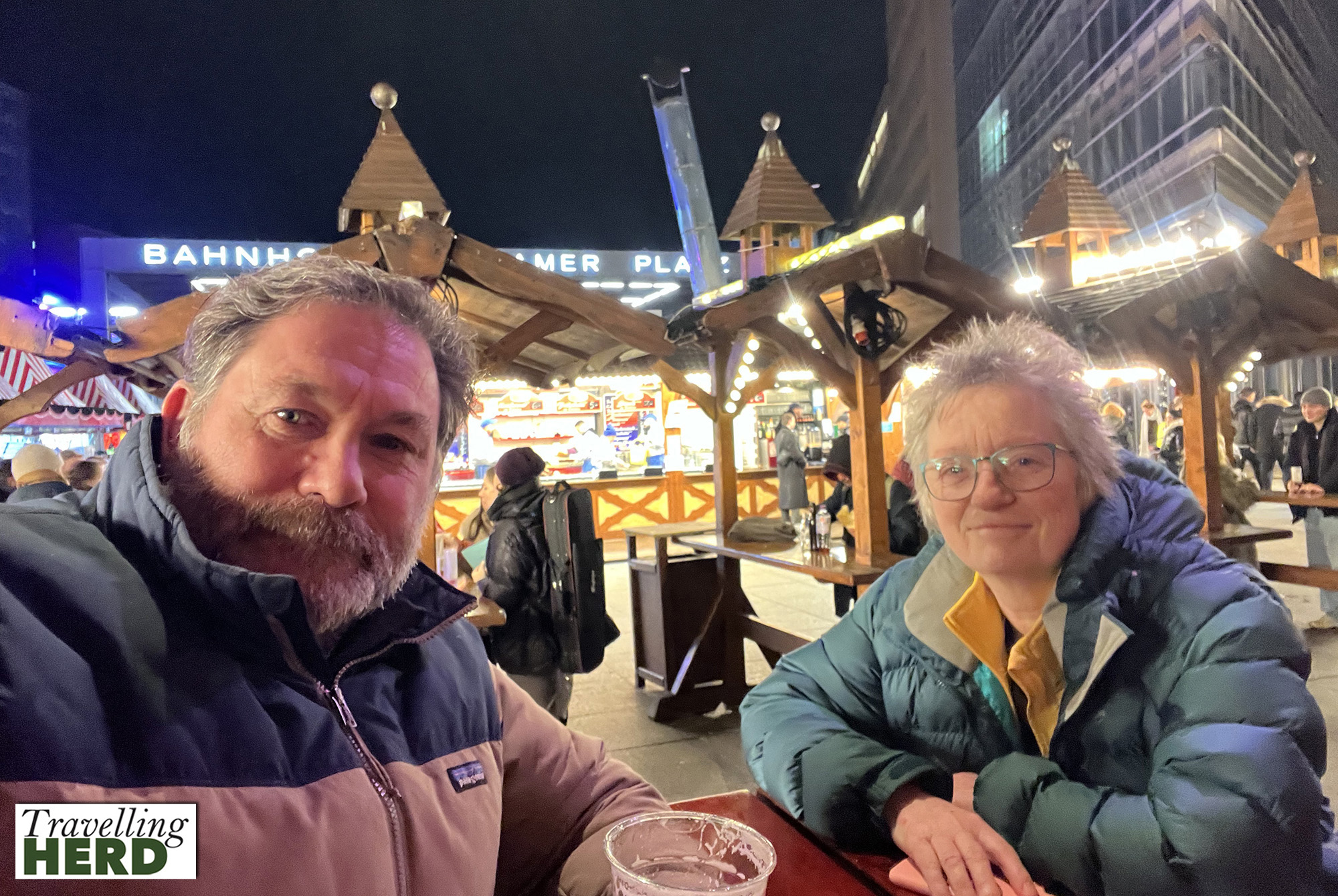
That evening, we did manage a swift half and a bratwurst at the Christmas Market at Potsdamer Platz and found Paulaner – a popular restaurant nearby which we felt would be a good place to eat one evening.
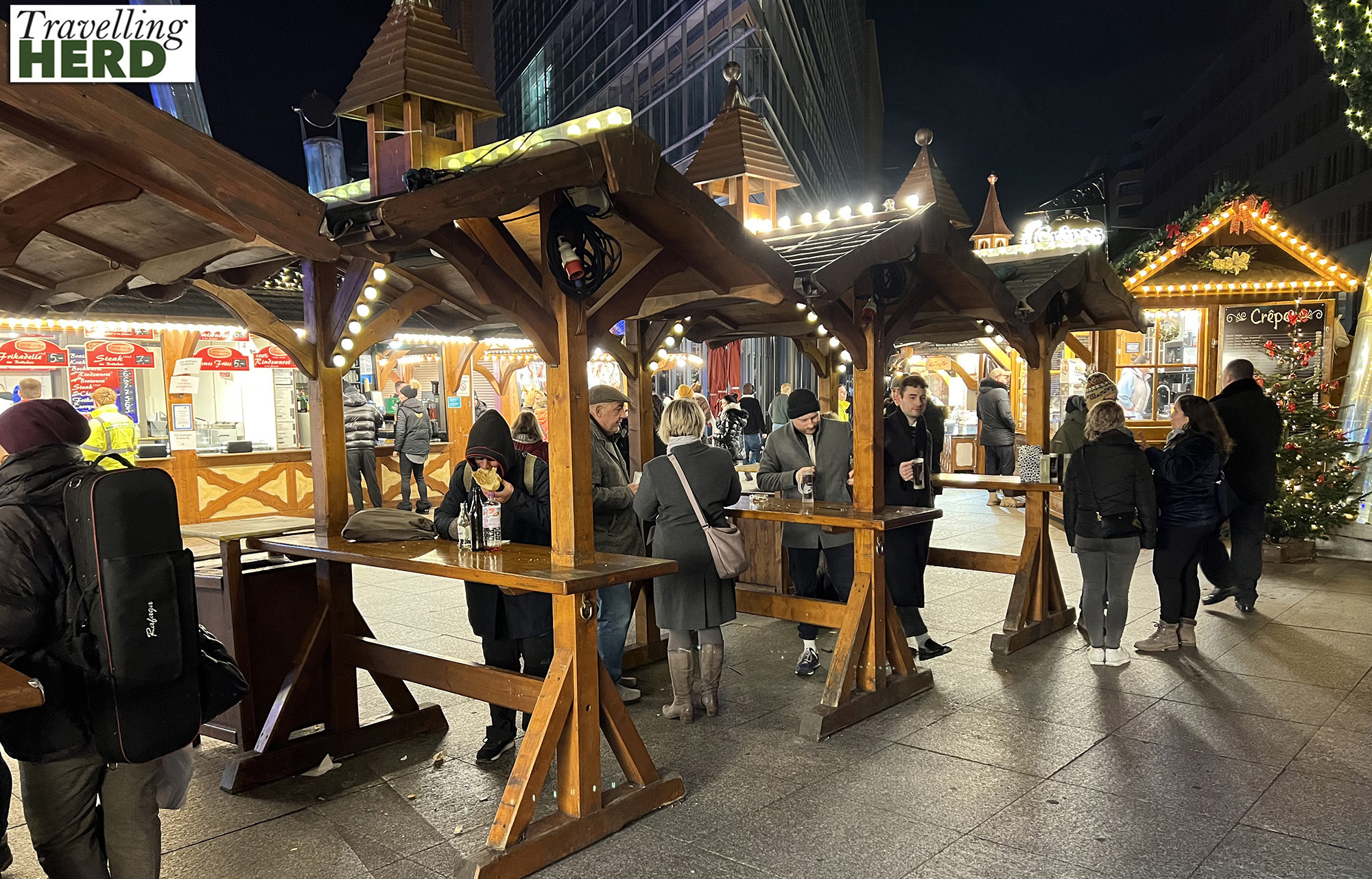
There were several cultural places we both wanted to visit in Berlin and so we identified [and booked in advance] one activity for each day around which we could plan other places and Christmas markets to visit. With so many Christmas markets [about 300] operating in the city day time drinking seems the norm. Matilda’s main aim therefore was to incorporate sufficient culture to delay the moment that Robert decided it was beer o’clock.
Our first booking for Tuesday morning was a timed entry to the Reichstag at 10:30. We walked to the subway station and formed an orderly queue behind a gentleman trying to buy a ticket. This was causing some delays and it seemed as though there was only one working ticket machine on the platform. When it was our turn we were slightly flustered by the queue forming behind us and chose the first option which seemed vaguely relevant: a Tourist 48 hour pass. This would prove to have hidden benefits.
The walk to the Reichstag from the subway station took us past the iconic Brandenburg Gate.
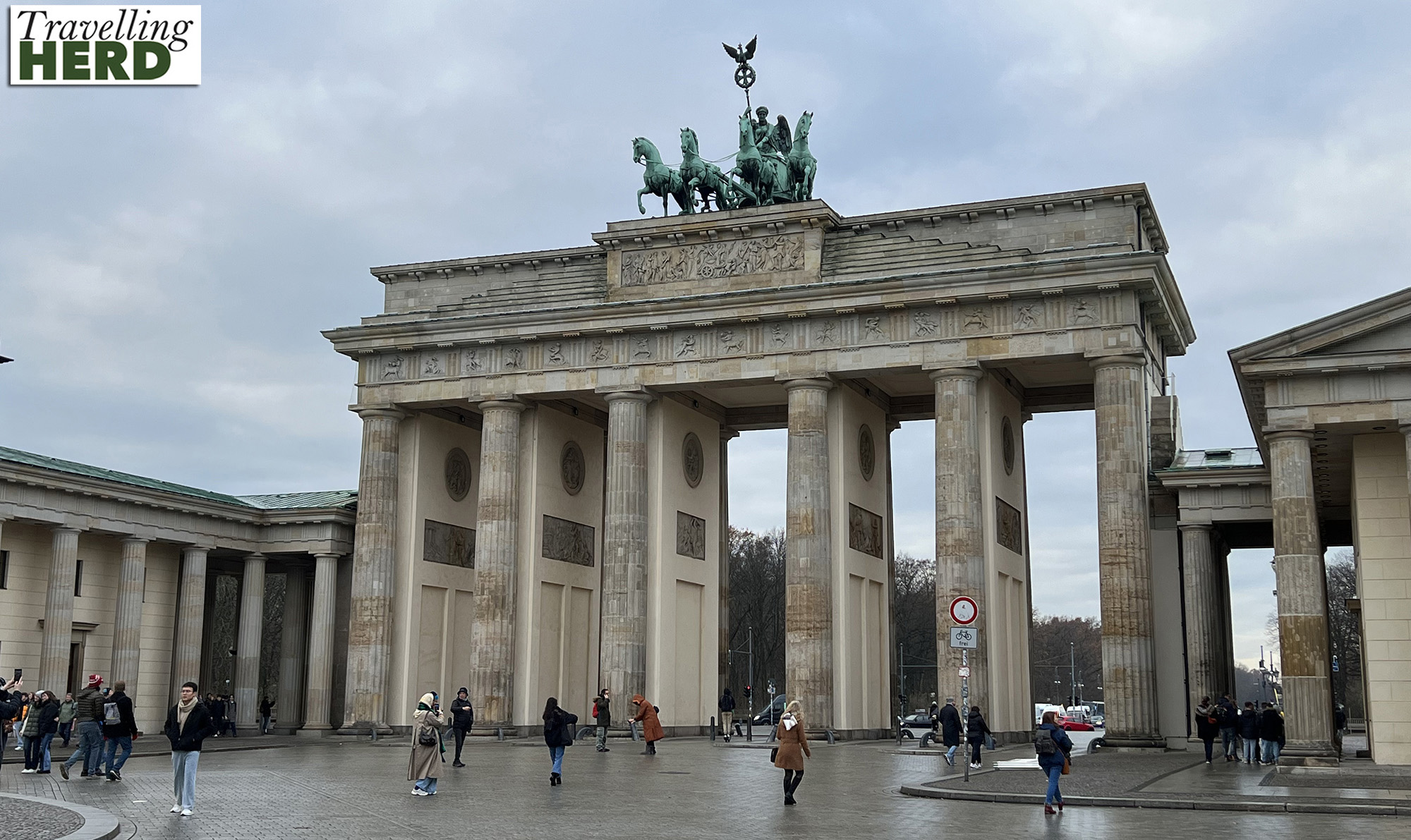
Our Tourist 48 hour pass allowed us unlimited travel within certain city zones and also gave us a discount on entry to several of the city’s main attractions. Entry to the Reichstag is free but tickets must be booked in advance to visit the roof terrace and dome. Tickets are also available to enter the chamber when parliament is sitting.
The original Reichstag was an imposing Neo-Renaissance building constructed between 1884 and 1894 on the left bank of the River Spree. It was the seat of both the German Empire and then the Weimar Republic [1918 to 1933]. An arson attack in February 1933 destroyed the main hall. The fire was used as an excuse by the National Socialists to wrest power away from parliament and suspend many civil liberties including the right to freedom of expression, the freedom of the press and the secrecy of post and telephone communication. None of these rights were restored under the Nazi regime.
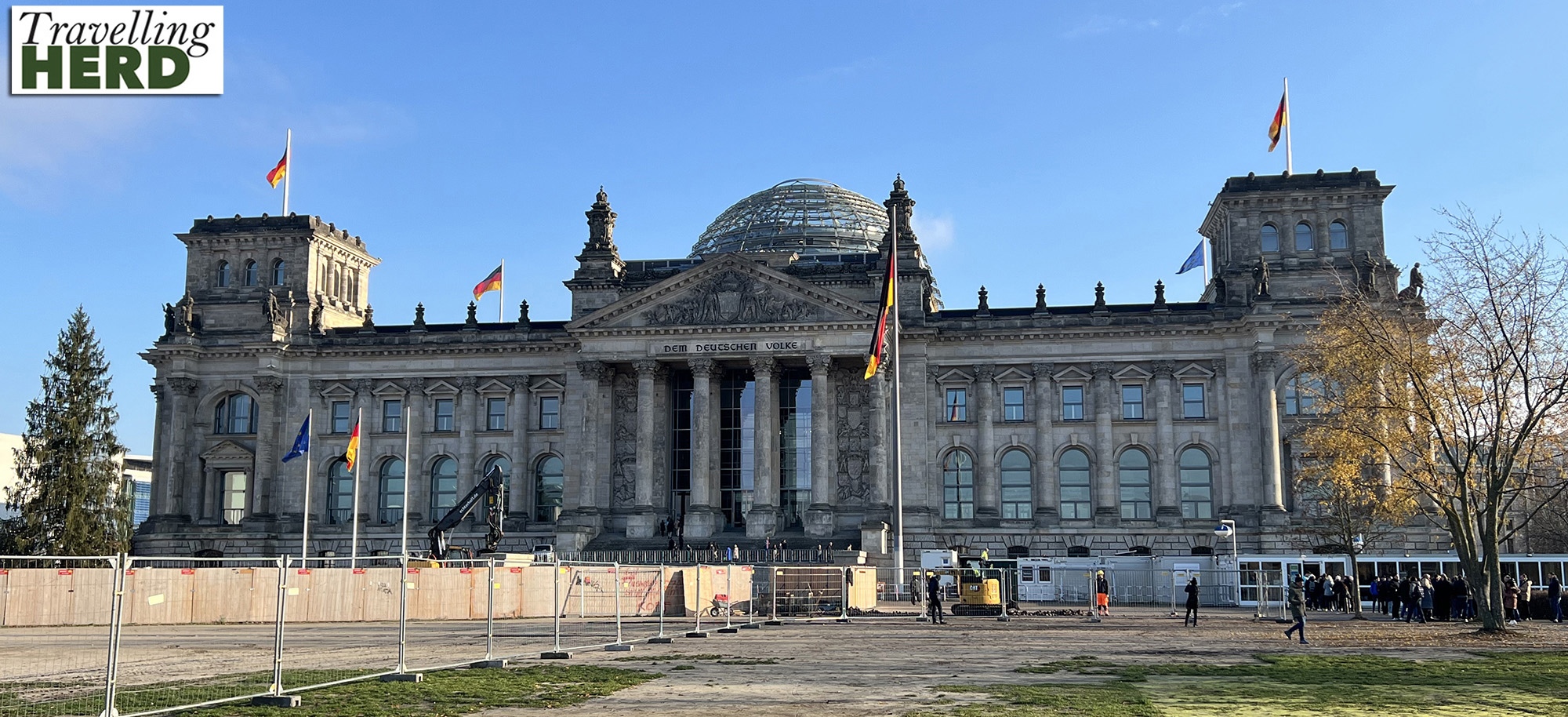
The building suffered further damage during WWII when the Allies took the city. During the 1960s the Reichstag was partially restored and used to stage events. Following the fall of the Berlin Wall in 1989, it was decided that the Reichstag should be redeveloped as the parliament building for the newly reunified Germany. It stands symbolically at the old border between East and West Berlin, close to the Brandenburg Gate, and adjacent to the area known as the “death strip” where many people were killed trying to eascape to the West.
The only elements remaining from the original building are the imposing facade and the four corner towers representing Bavaria, Prussia, Saxony and Württemberg – the four kingdoms of the German Empire at the time of its inception [see photo above].
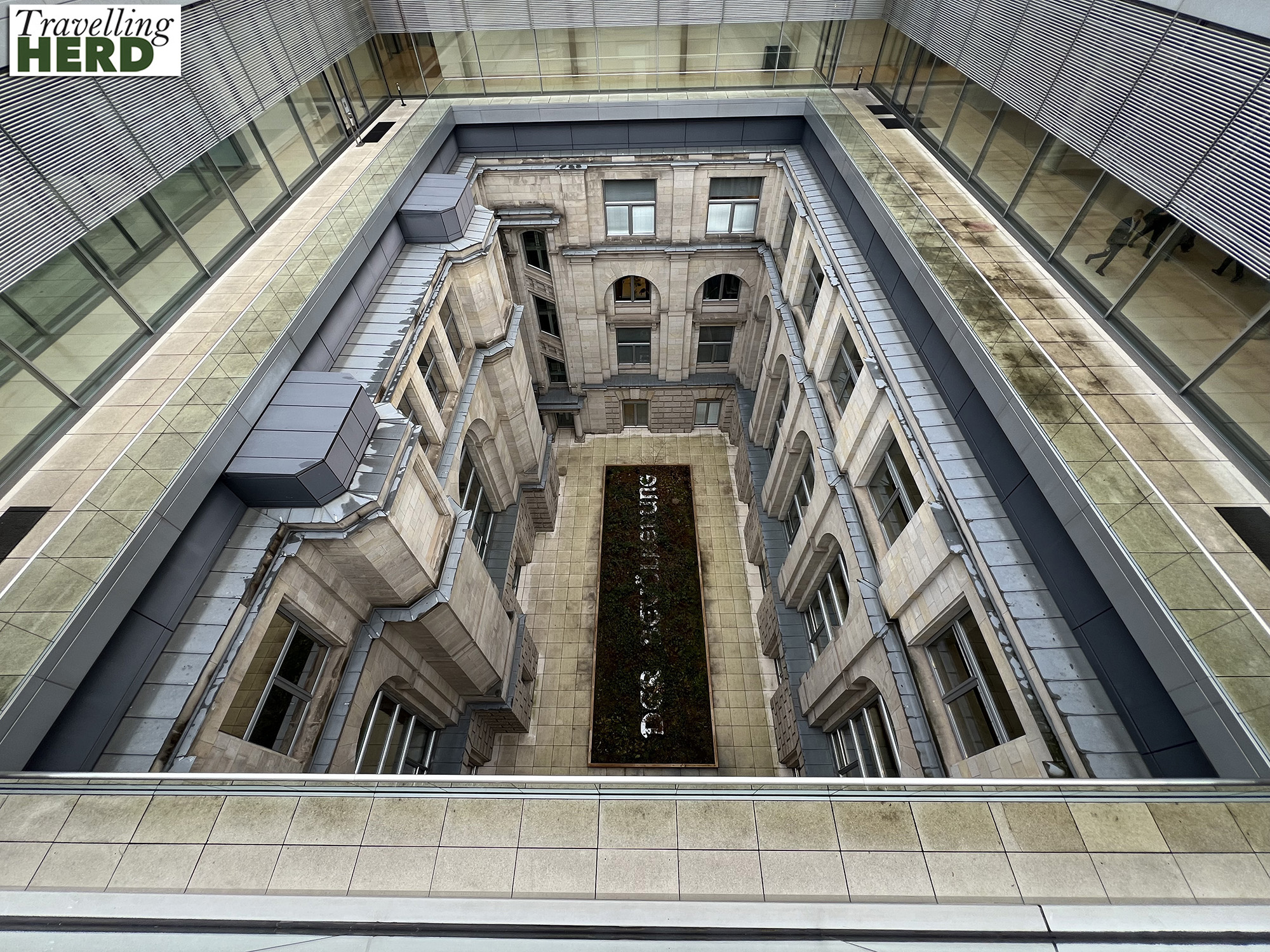
Designed by the renowned UK architect, Norman Foster, the new Reichstag was built between 1995 and 1999 and features a glass dome and panoramic rooftop views across the city [see Selfie of the day]. A cone with 360 mirrors through the centre of the dome moves throughout the day and directs sunlight into the building, conserving energy and allowing visitors to see into the debating chamber directly below where Germany’s Parliament, the Bundestag meet.
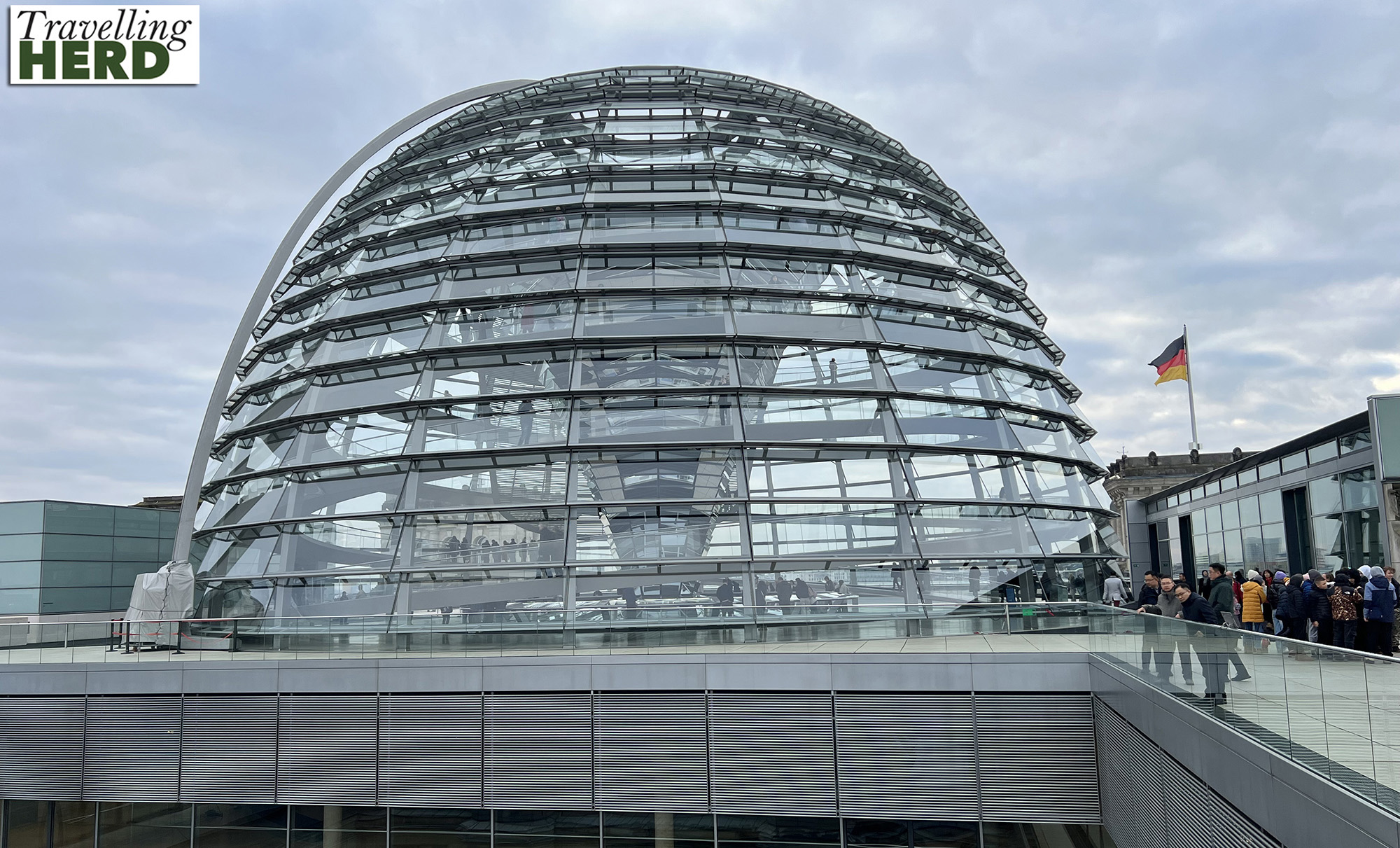
It is strangely reminiscent of the Rain Vortex at Singapore airport. Two steel ramps, each 320m long, spiral up the inside of the dome in opposite directions with one used to ascend and one to descend the structure. At the entry level a detailed display explains the history of the building.
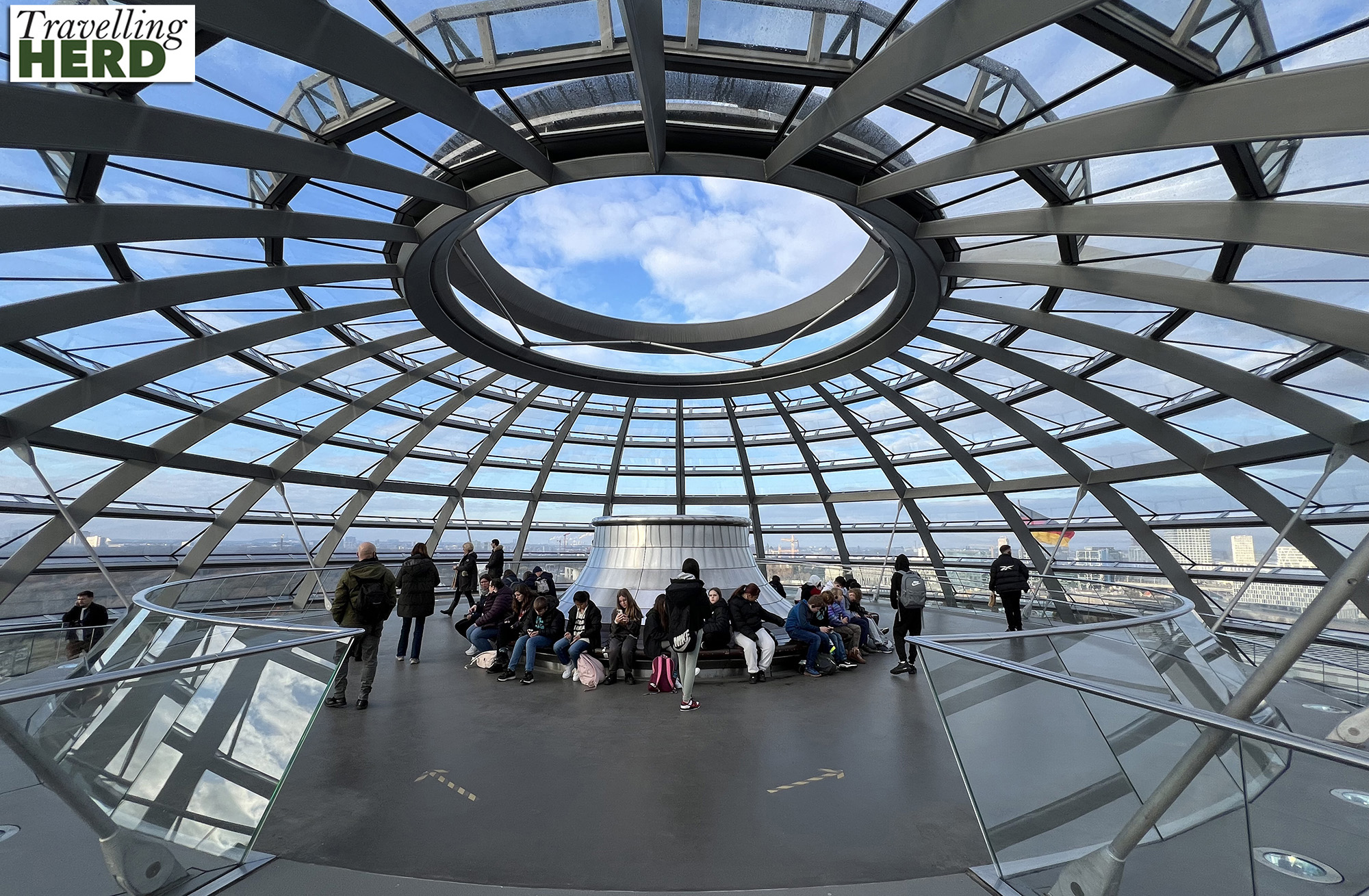
From here we went to the Stasi Museum on Normannenstraße, which is described as a “research centre and a memorial”. It is housed in the building formerly occupied by the infamous East German Ministry of State Security or Ministerium für Staatssicherheit also known as the Stasi. The architecture is more brutalist the further you get into the old eastern part of the city.
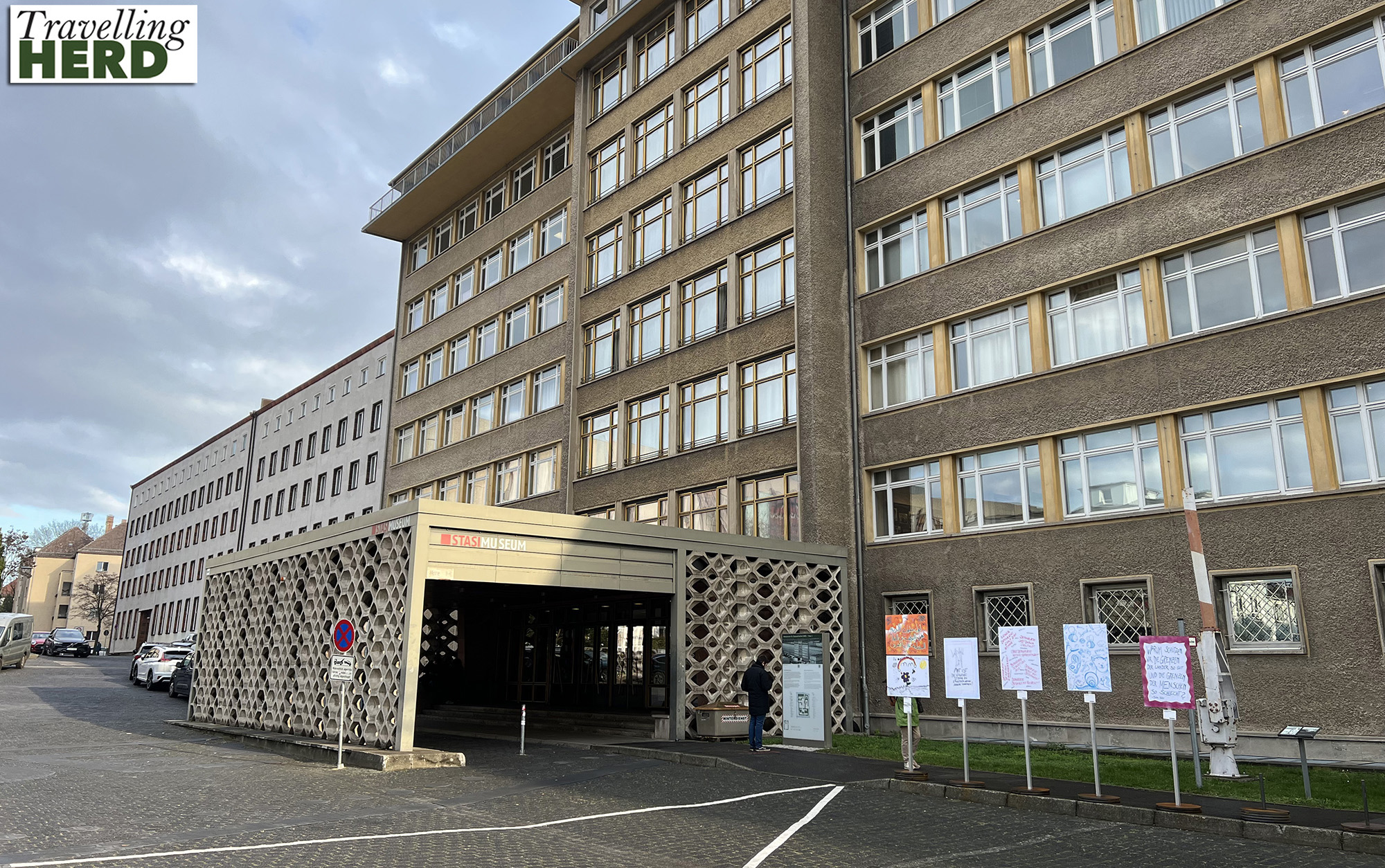
After the fall of the Berlin Wall in November 1989, on 15th January 1990 the Stasi building was occupied by demonstrators and there was a growing popular demand to disband the Stasi’s operations and open their files to the public.
The museum explains how informants were recruited, how the population was controlled, and ordinary people share how state surveillance affected their lives. Exhibits include the technology the Stasi used including bugs, weapons and hidden cameras like this one [below] designed to be concealed behind a coat button.
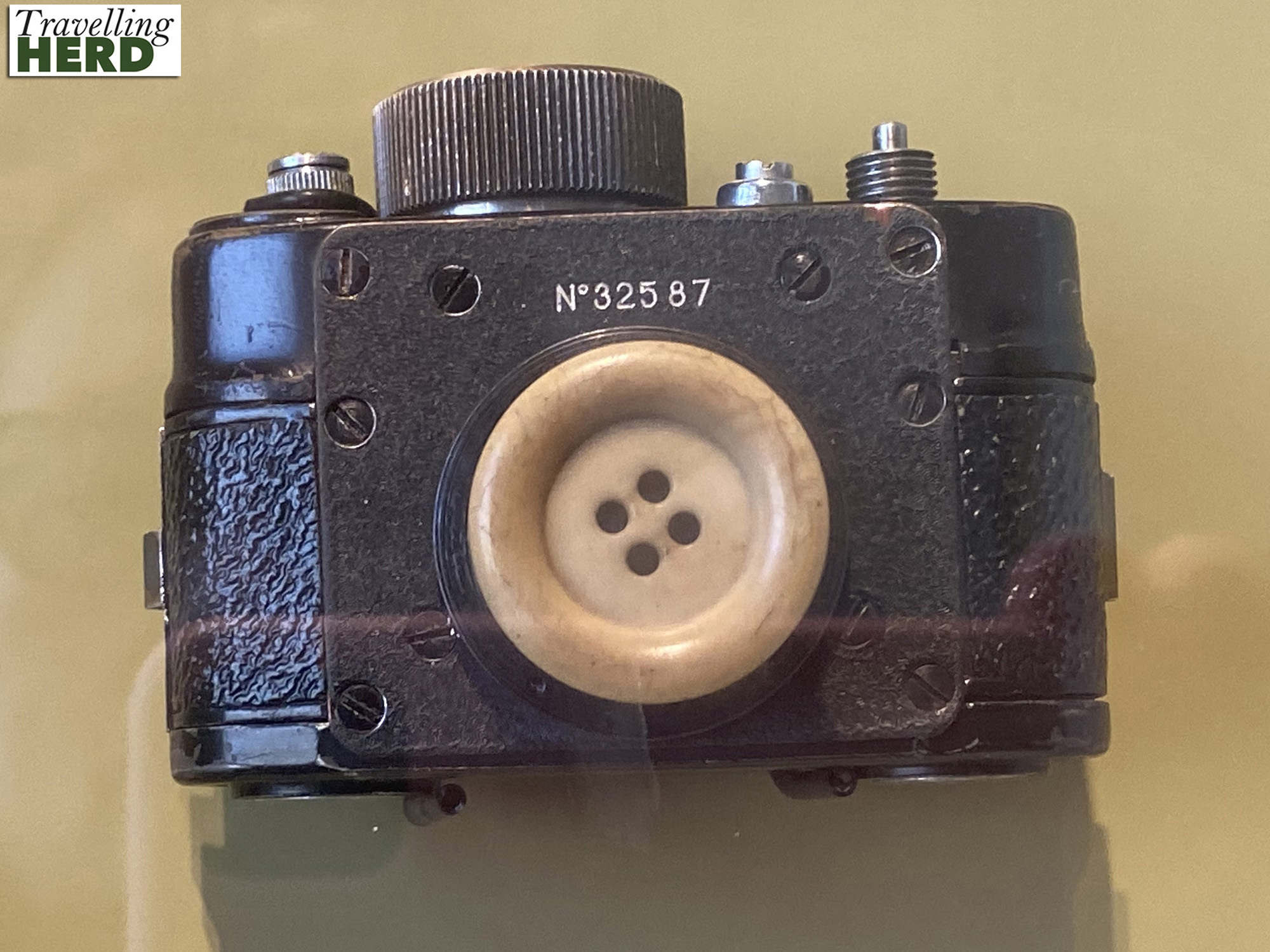
Erich Mielke was Minister of State Security and head of the Stasi from 1957 until the fall of the Berlin Wall. The second floor of the building remains untouched since then and to our eyes, much of the decor was more reminiscent of the 1950s than the late 1980s.
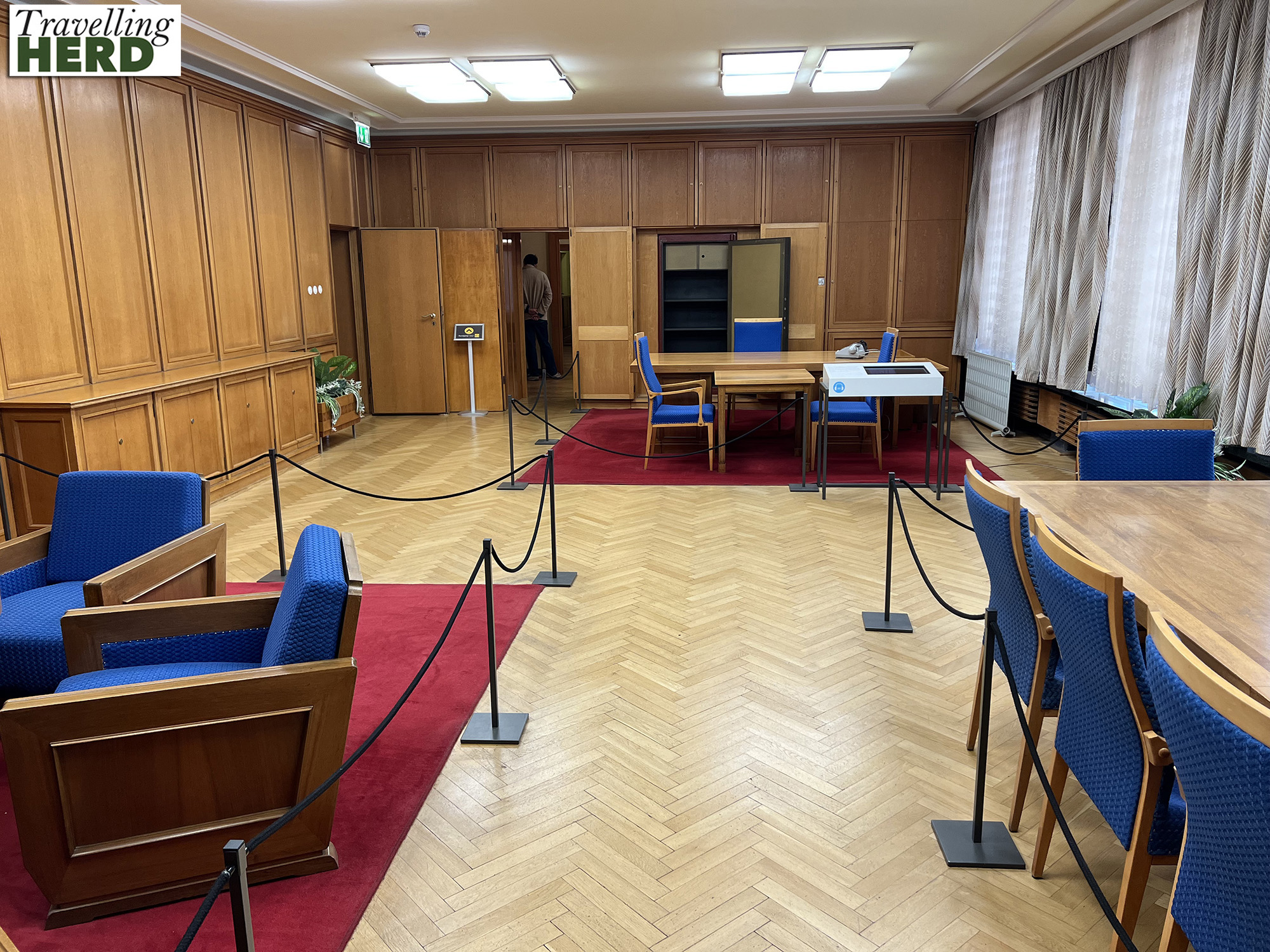
In contrast to the mid twentieth century decor of the East, next we headed to Charlottenburg Palace to enjoy the rococo splendour of the 17th and 18th centuries. We were pleased to discover that our Tourist 48 hour pass gave us a 25% discount on the entrance fee.
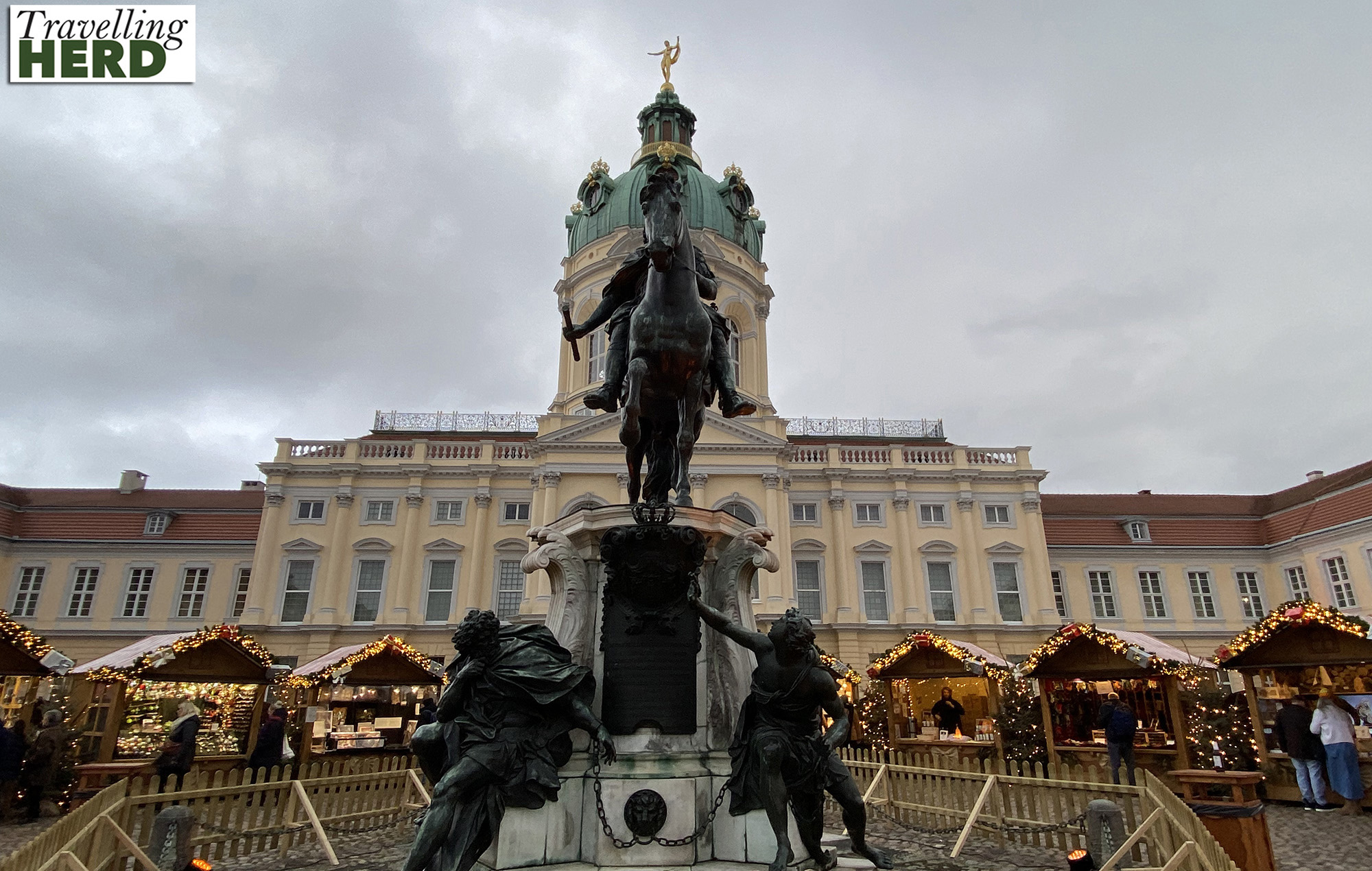
Sophie Charlotte of Hanover was the younger sister of George of Hanover who ascended the British throne in 1714 as George I. In 1684, she married Friedrich III, who was the Elector of Brandenburg and then the Duke of Prussia and she was the first Queen Consort in Prussia. Friedrich gave Sophie Charlotte a large estate and the village of Lietze/Lützow.
At the rear in the centre of the palace are two large oval halls, the upper one features ornate gilding and tall mirrors and was used as a ceremonial hall whilst the lower hall gave access to the ornate formal gardens.
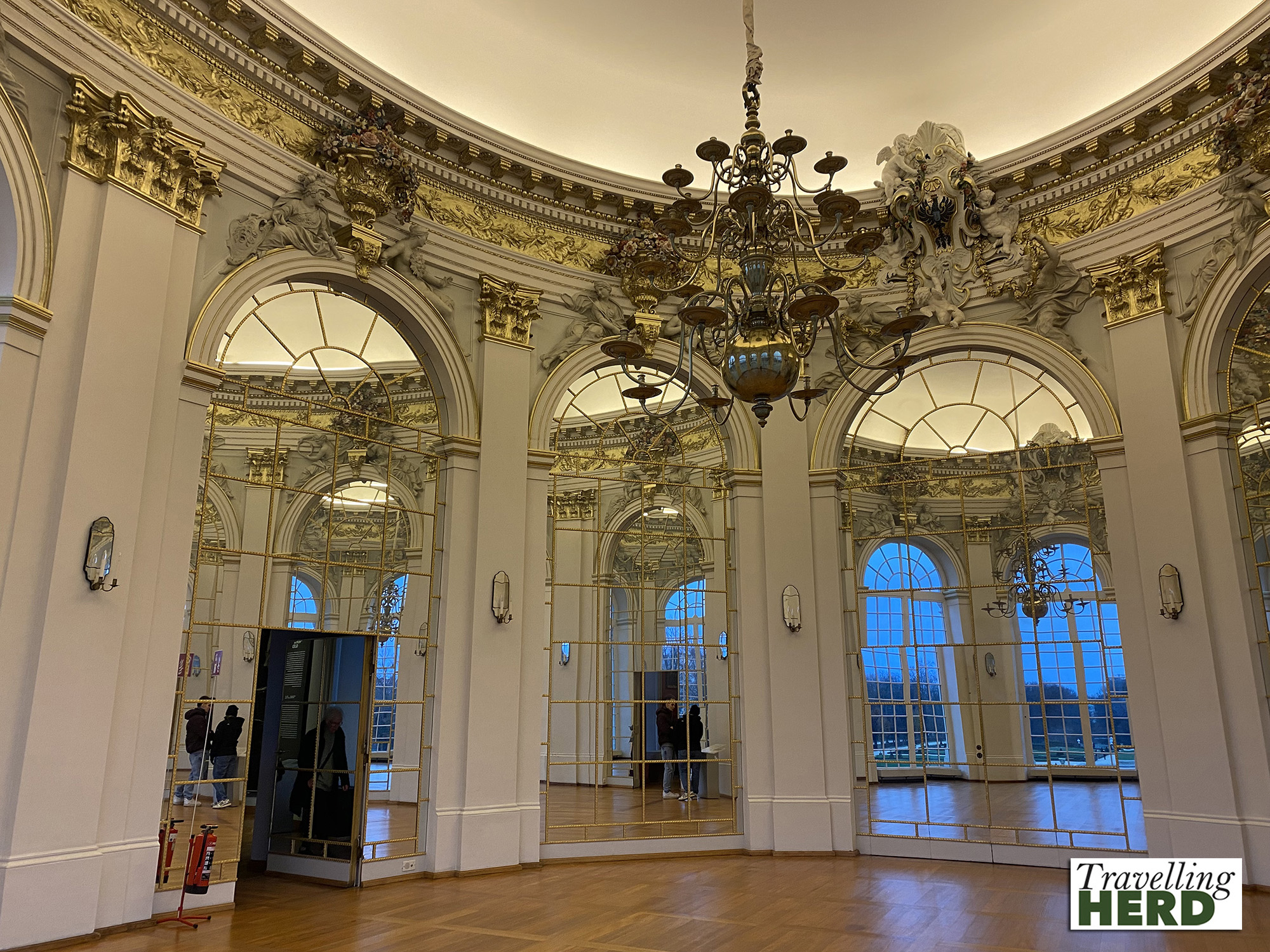
When it was built, the palace was still outside Berlin and this was Sophie Charlotte’s summer palace. It has been extended several times and is indeed vast and palatial.
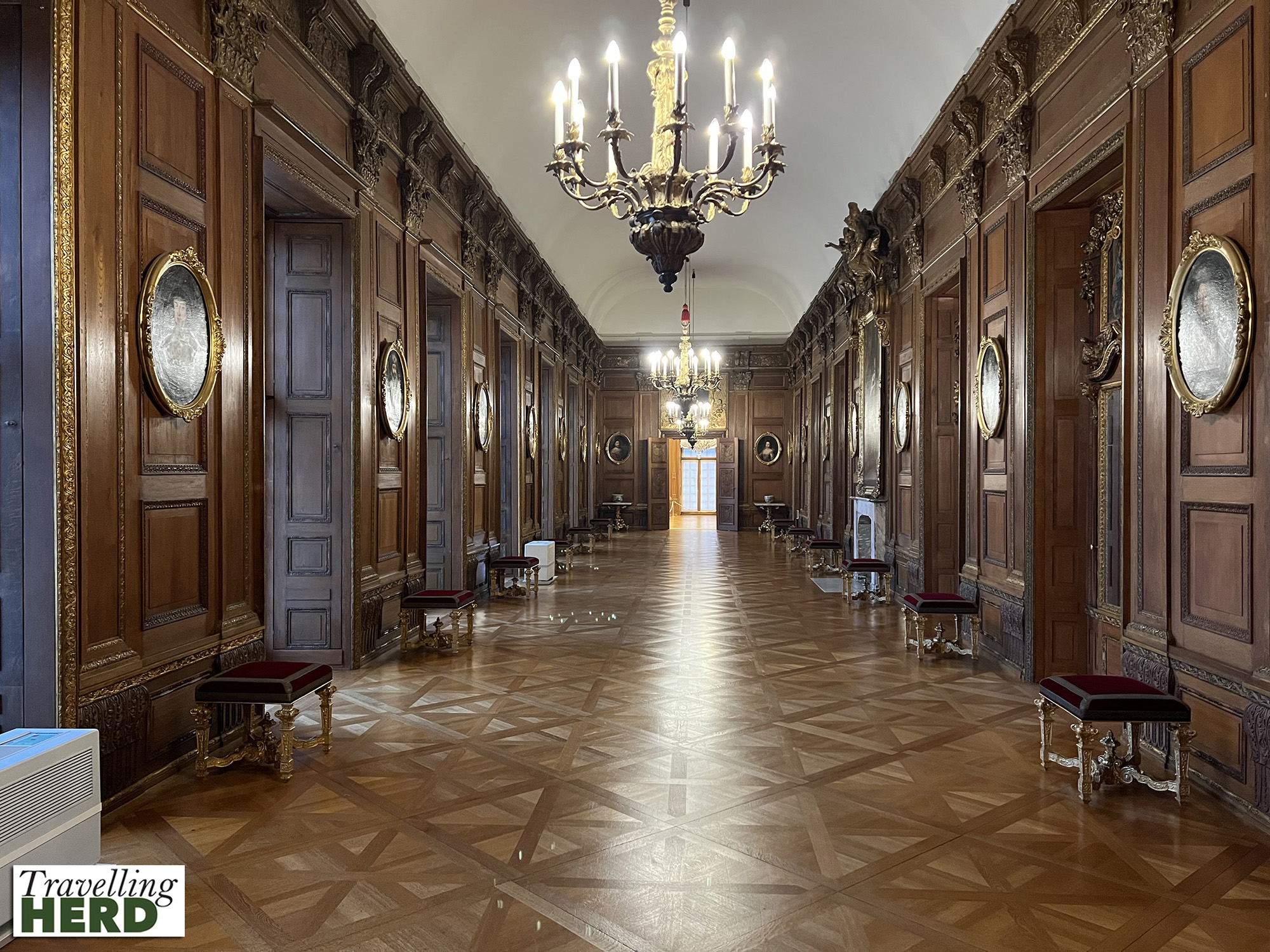
Completed in 1699, it was initially known as Lietzenburg Palace named after the village but following Sophie Charlotte’s death, aged just 36, Friedrich renamed the palace and the surrounding area Charlottenburg in her honour.
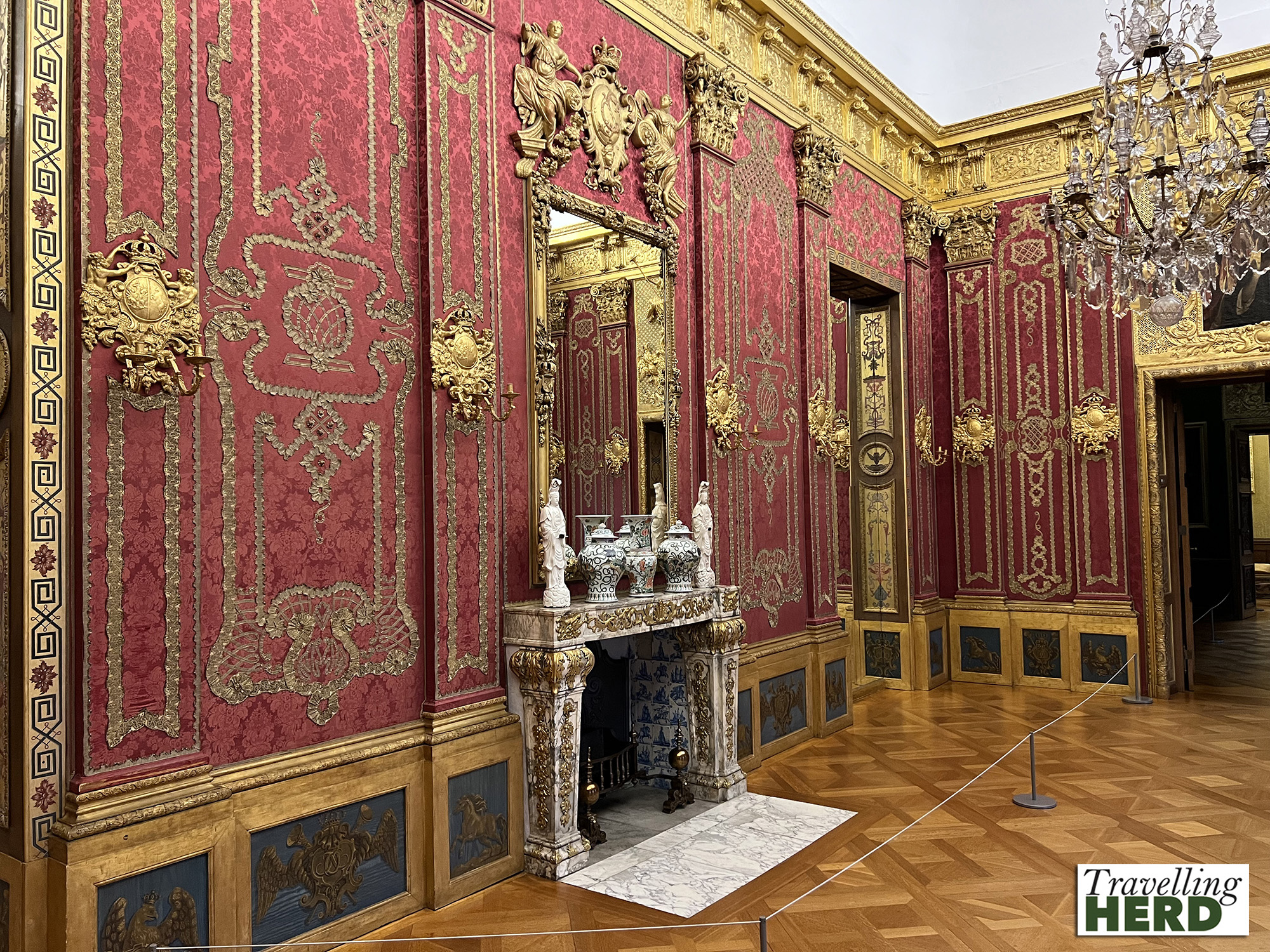
The Porcelain Cabinet [below] is about as far removed from a cupboard with shelves as you can get. Created between 1705 and 1706, the entire room was designed to display the royal collection of almost 3,000 pieces of blue and white Oriental porcelain. Bowls of all sizes and uses, plates, saucers, urns and cups are displayed against gilded walls each on their own plinth or in their own niche or recess.
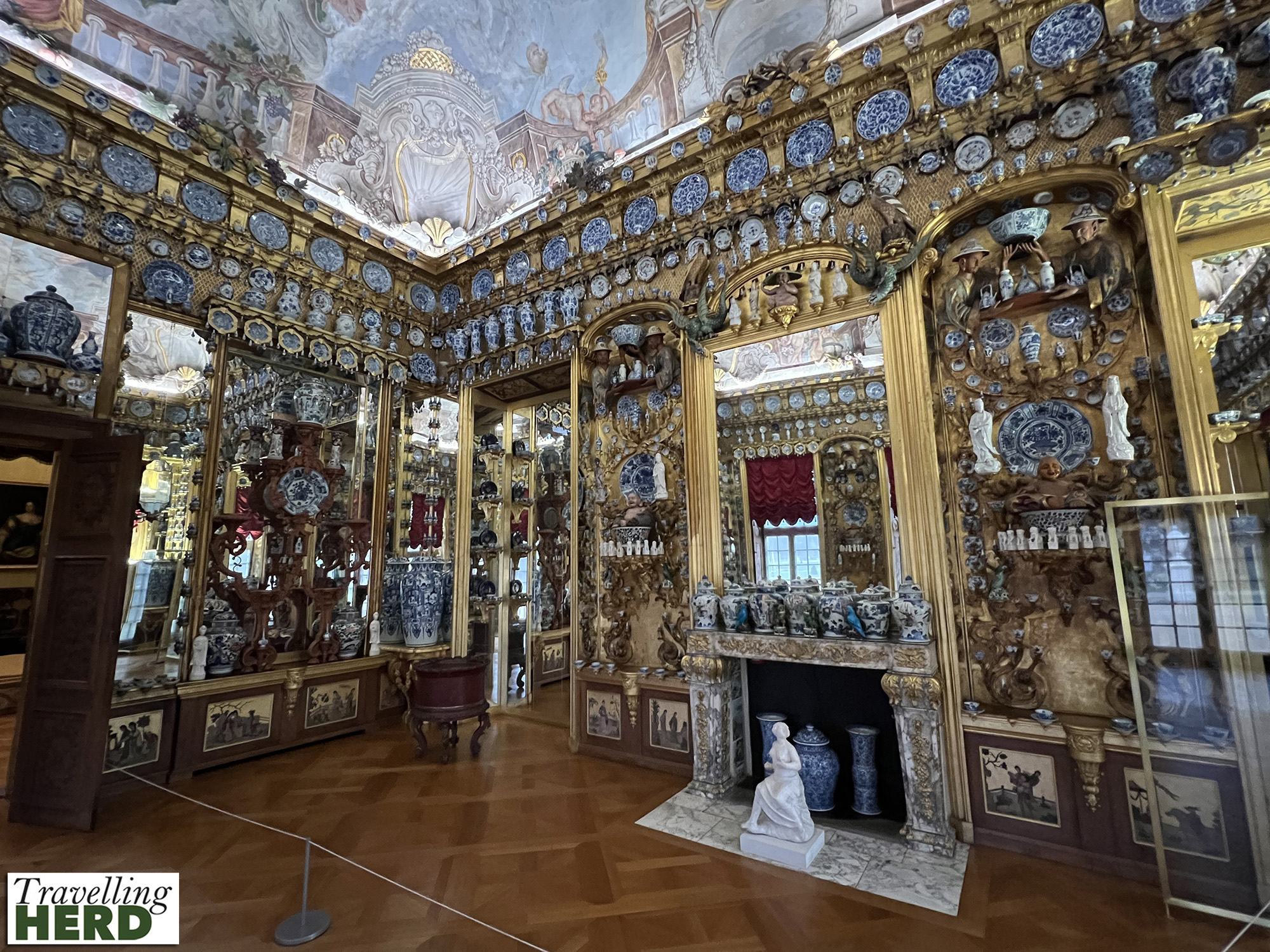
The Flemish artist Jan Anthonie Coxie who painted the frescos in the Porcelain Room also painted the frescos and altarpiece in the ornate Palace Chapel.
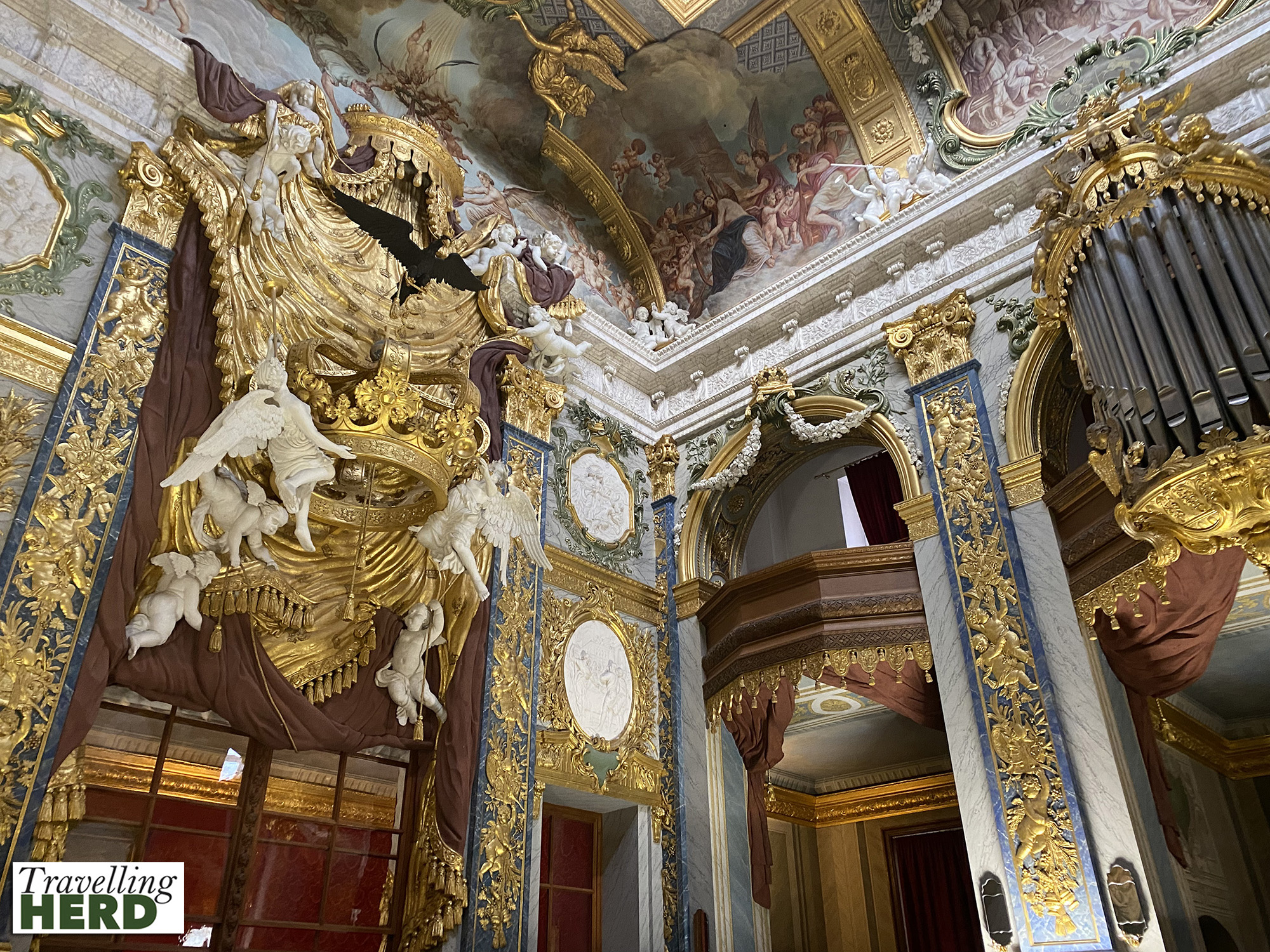
The large formal garden behind the palace includes a belvedere; a mausoleum; a theatre and a pavilion. Unfortunately, we arrived about an hour before closing time as the light was fading so we did not have time to enjoy the gardens and these other buildings before night fell. A return visit in summer might be in order.
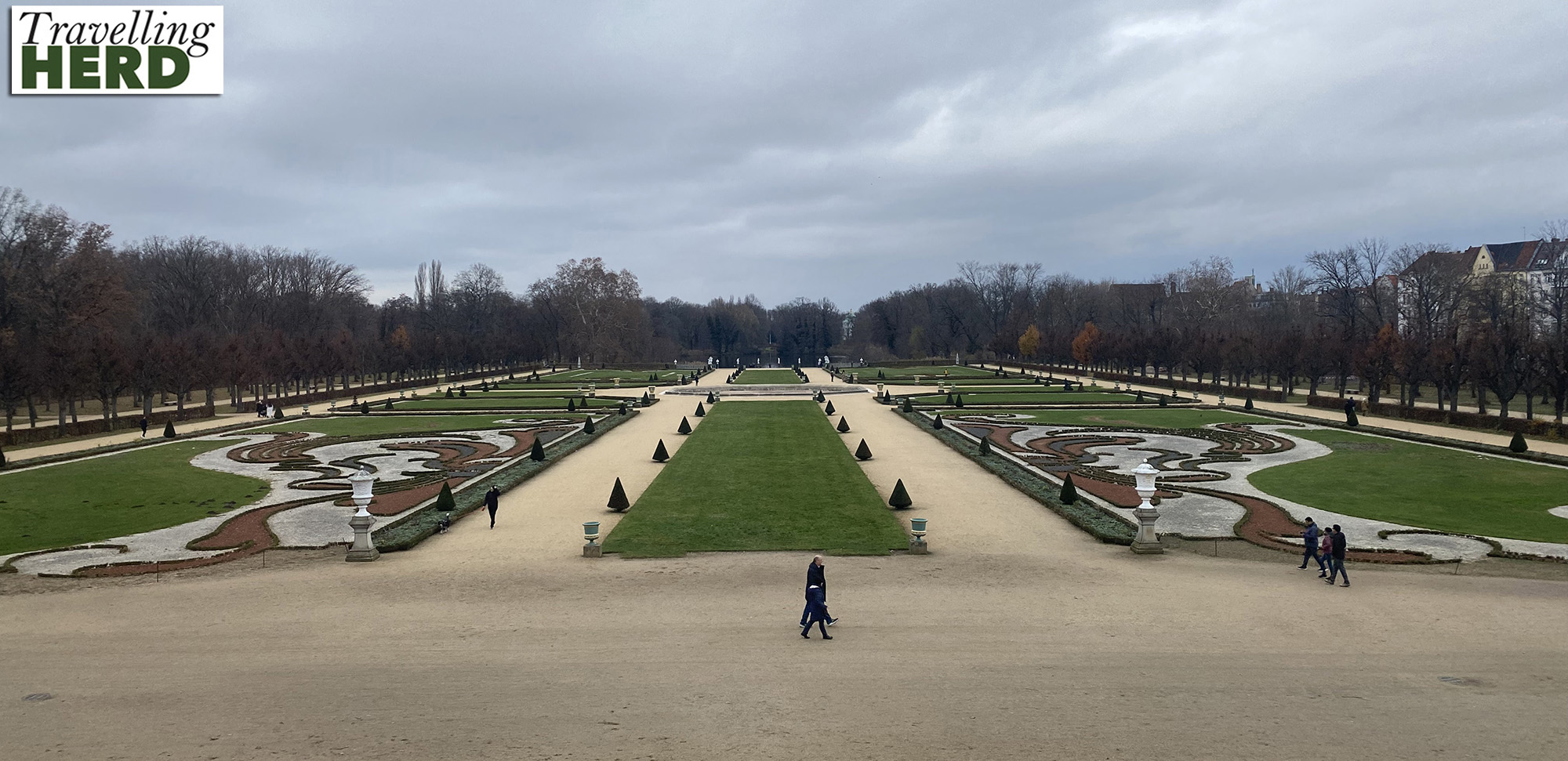
The rococo ballroom, also known as the Golden Gallery, has delicate ornate gilded plasterwork and it is easy to imagine the swish of ballgowns here.
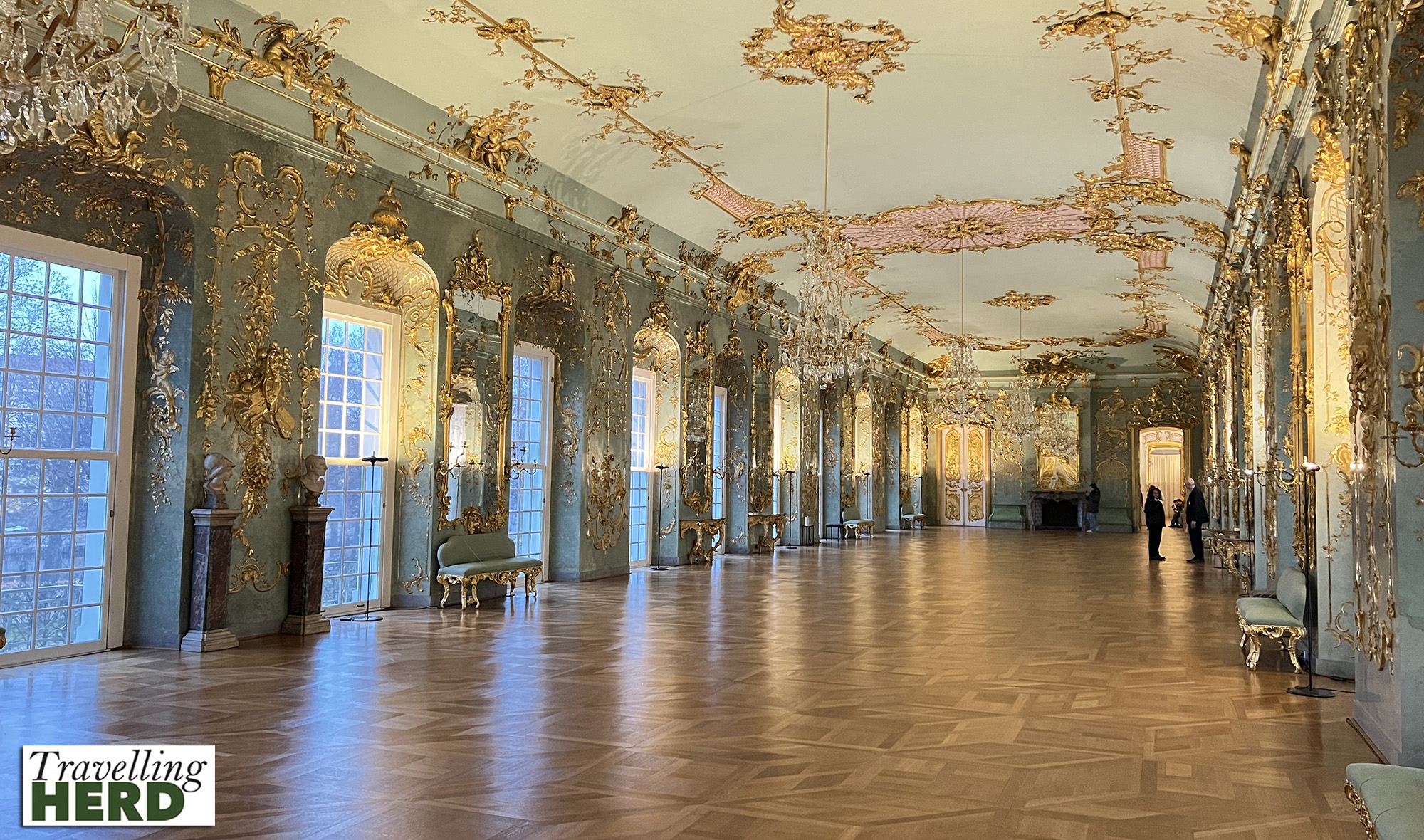
The Silver Vault includes an array of dinner services made from gold, silver, glass and porcelain. These are displayed laid out on tables, as though ready for a meal.
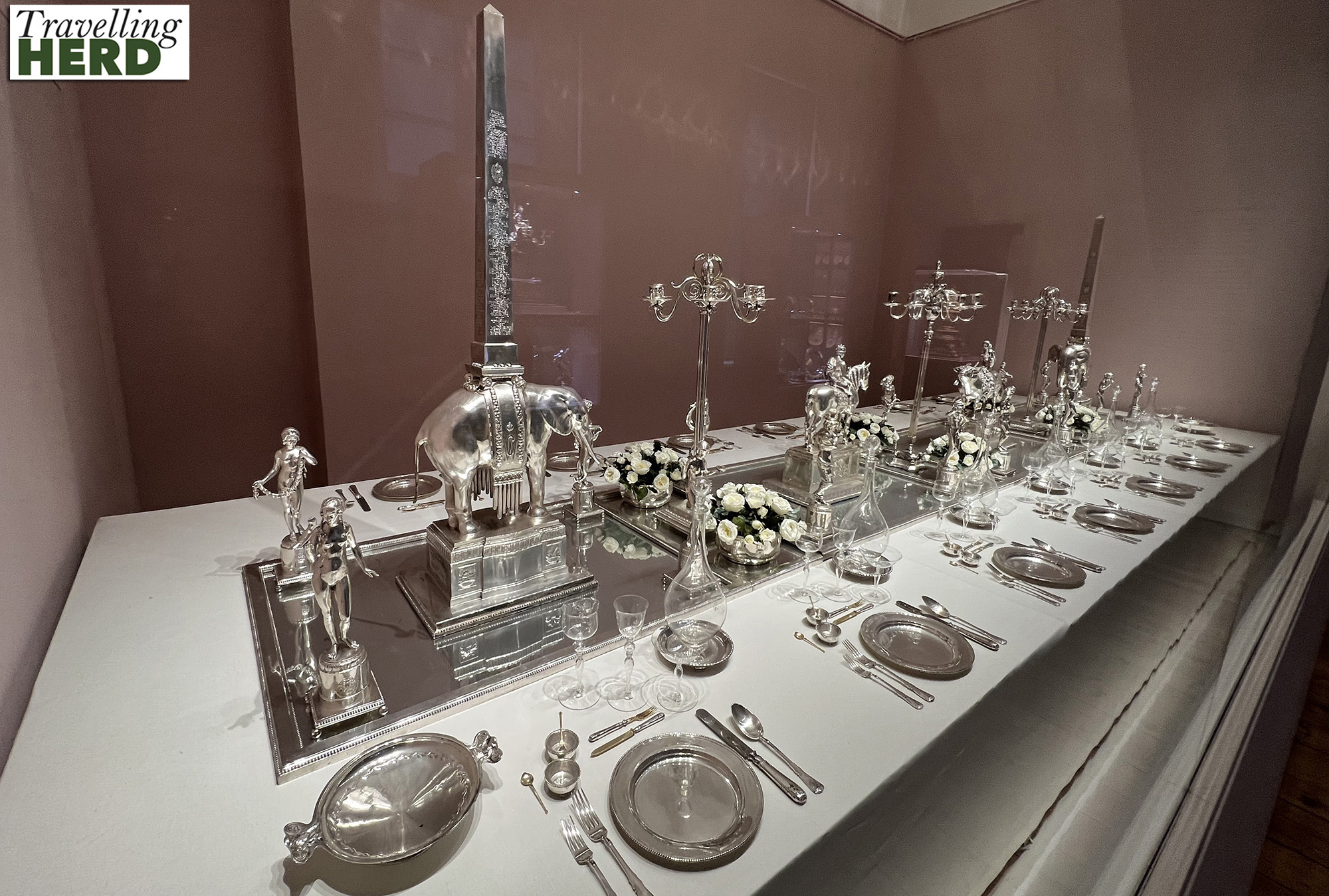
The place was badly damaged during in 1943 during WWII but was preserved and rebuilt to its former glory. It is well worth a visit.
On the square in front of the palace is the Charlottenburg Christmas Market. As befits a Christmas Market outside a palace, the stalls were more exclusive than some we saw.
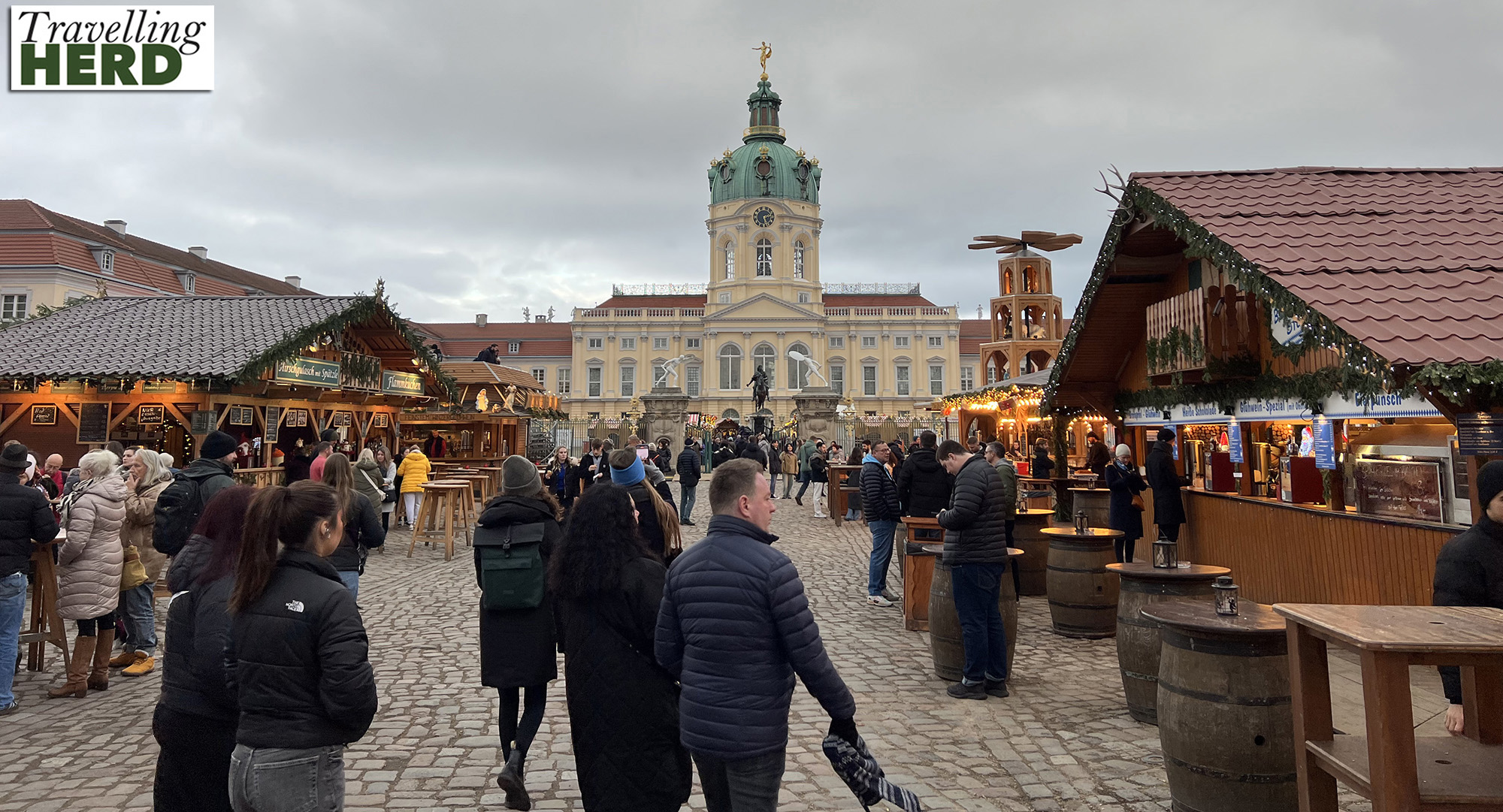
However elegant the stalls a Christmas markets always provides the opportunity to enjoy a glass of beer or mulled wine.

After dark, light shows were projected on to the facade of the palace. The images using the structure of the Corinthian pillars as candy canes were particularly effective [see Video of the day].
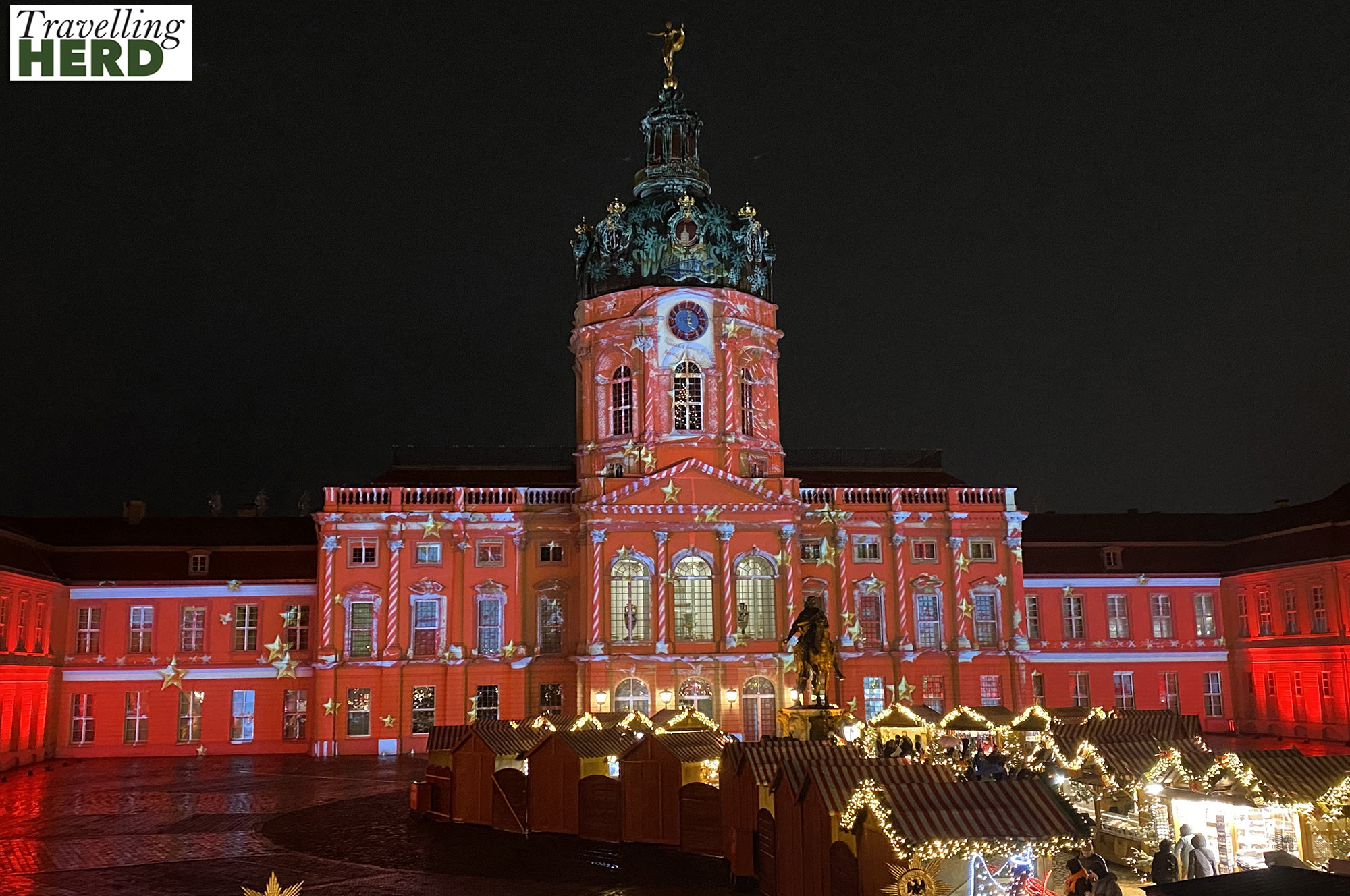
With nightfall, the temperature also plummeted and Robert decided it was time to head indoors and indulge in a beer coloured green and flavoured with sweet woodruff before heading back to the hotel. In Cologne they have Kölsch (20ml glasses), in Dusseldorf they have altbier (brown), in Munich they have Hell (litre steins) and in Berlin they have Berliner Weiss, which is often served as red (added raspberry syrup) or green (added sweet woodruff syrup).
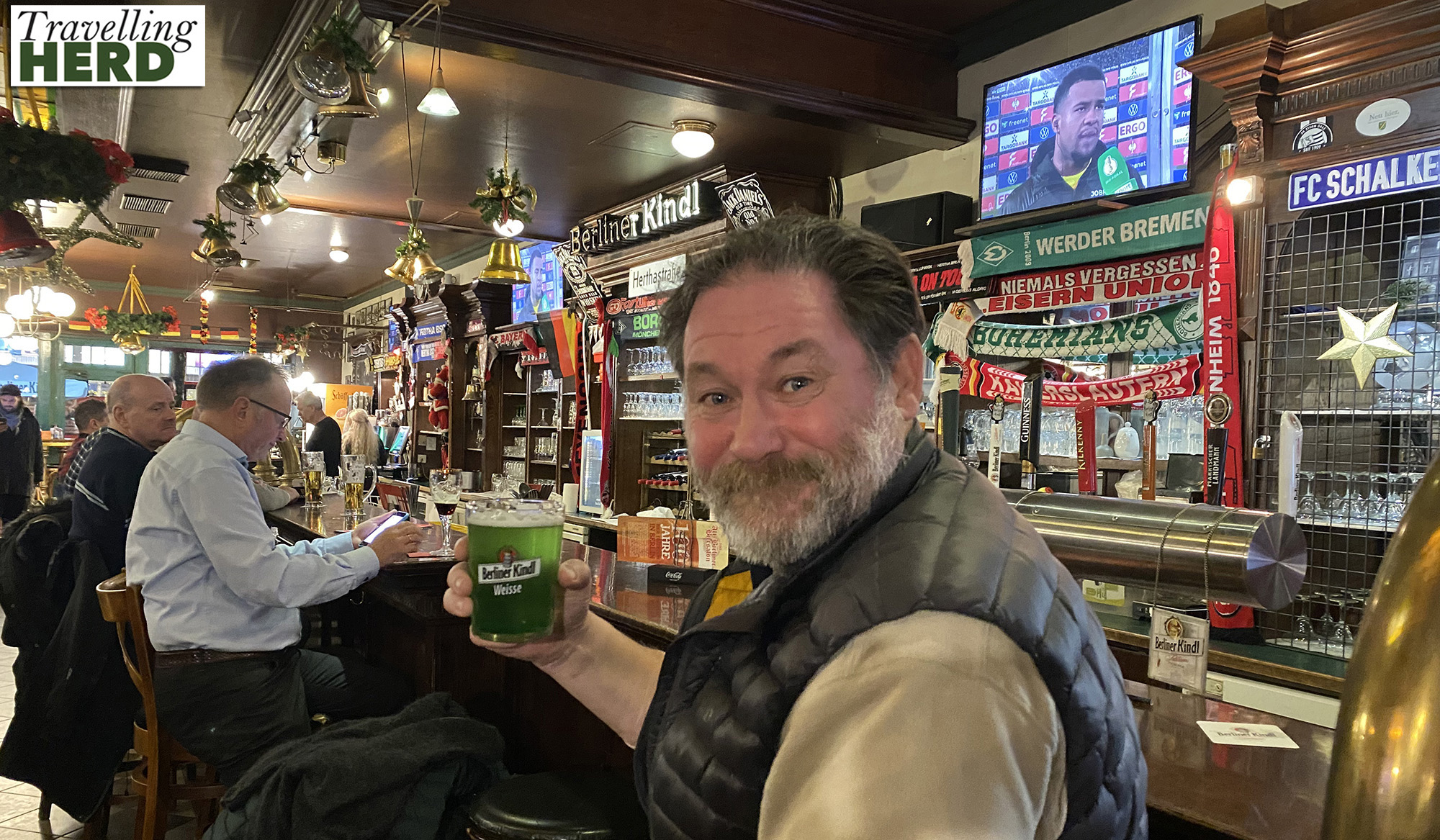
Video of the day:
Selfie of the day:
